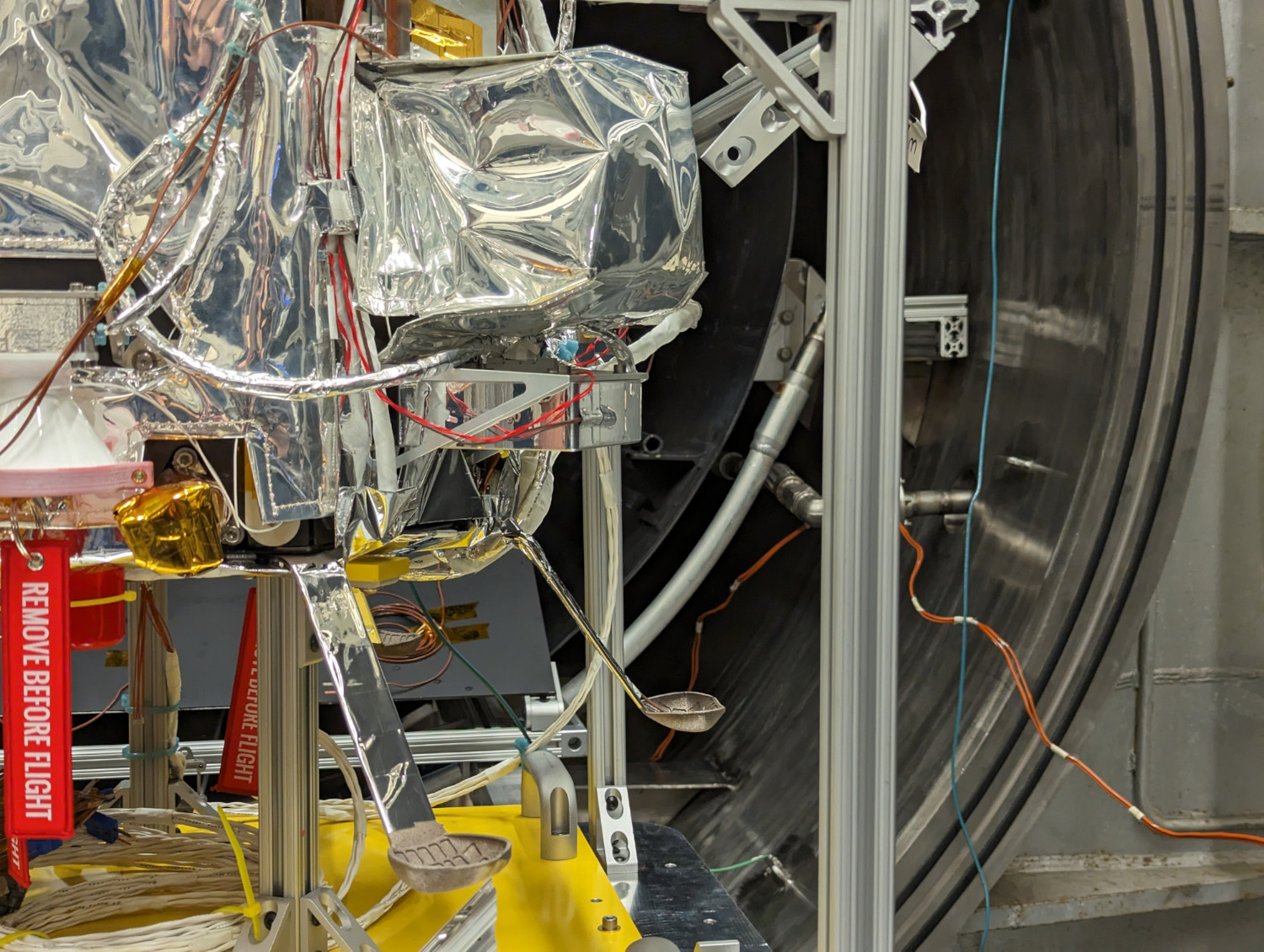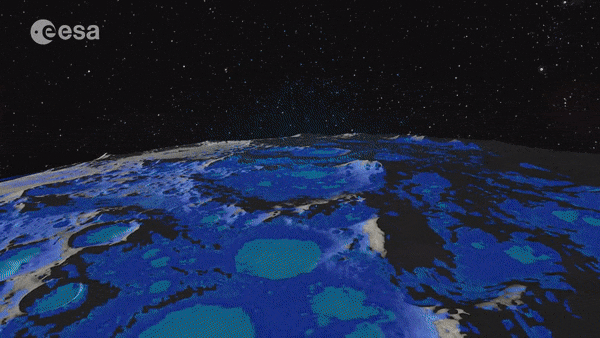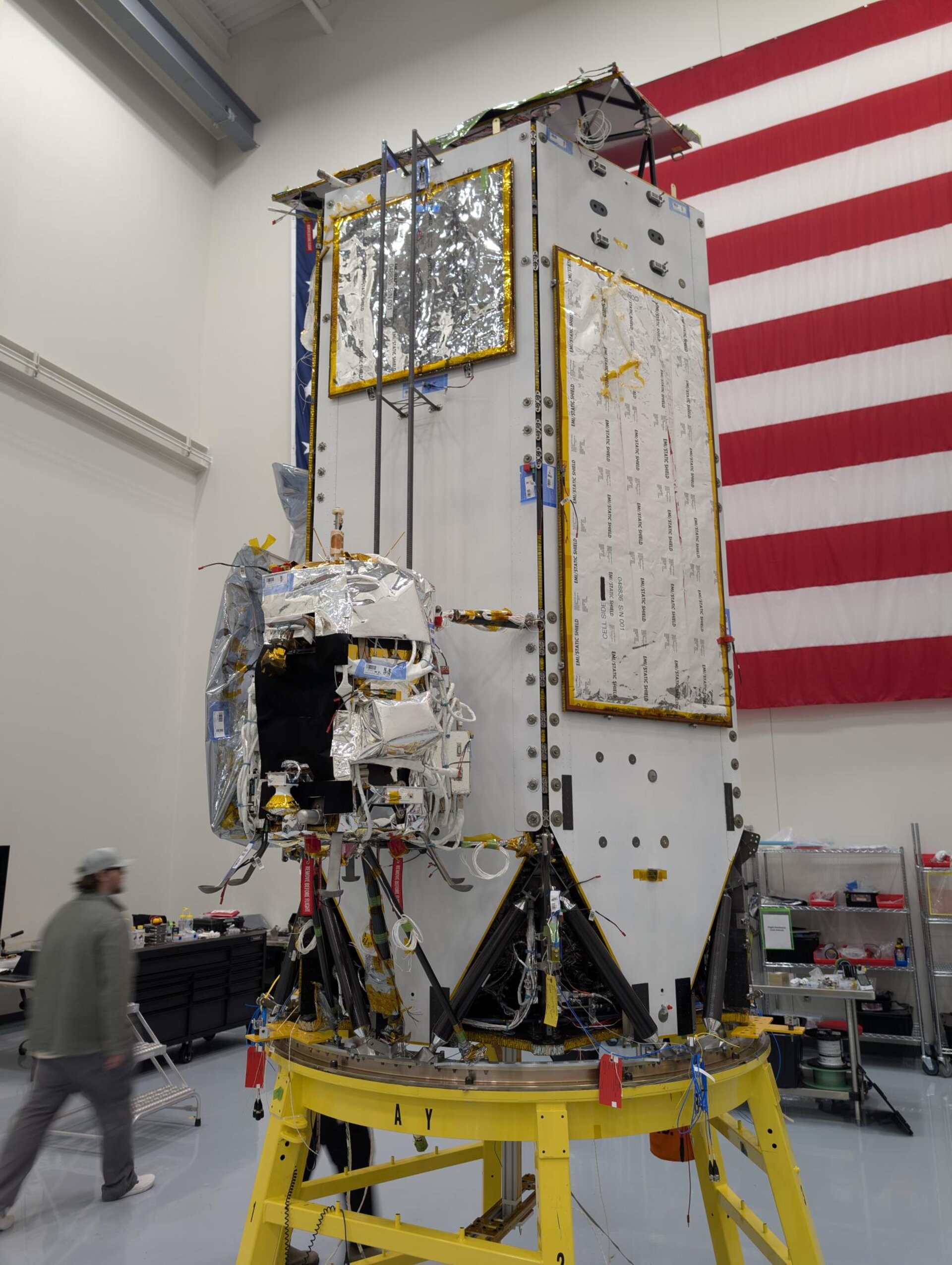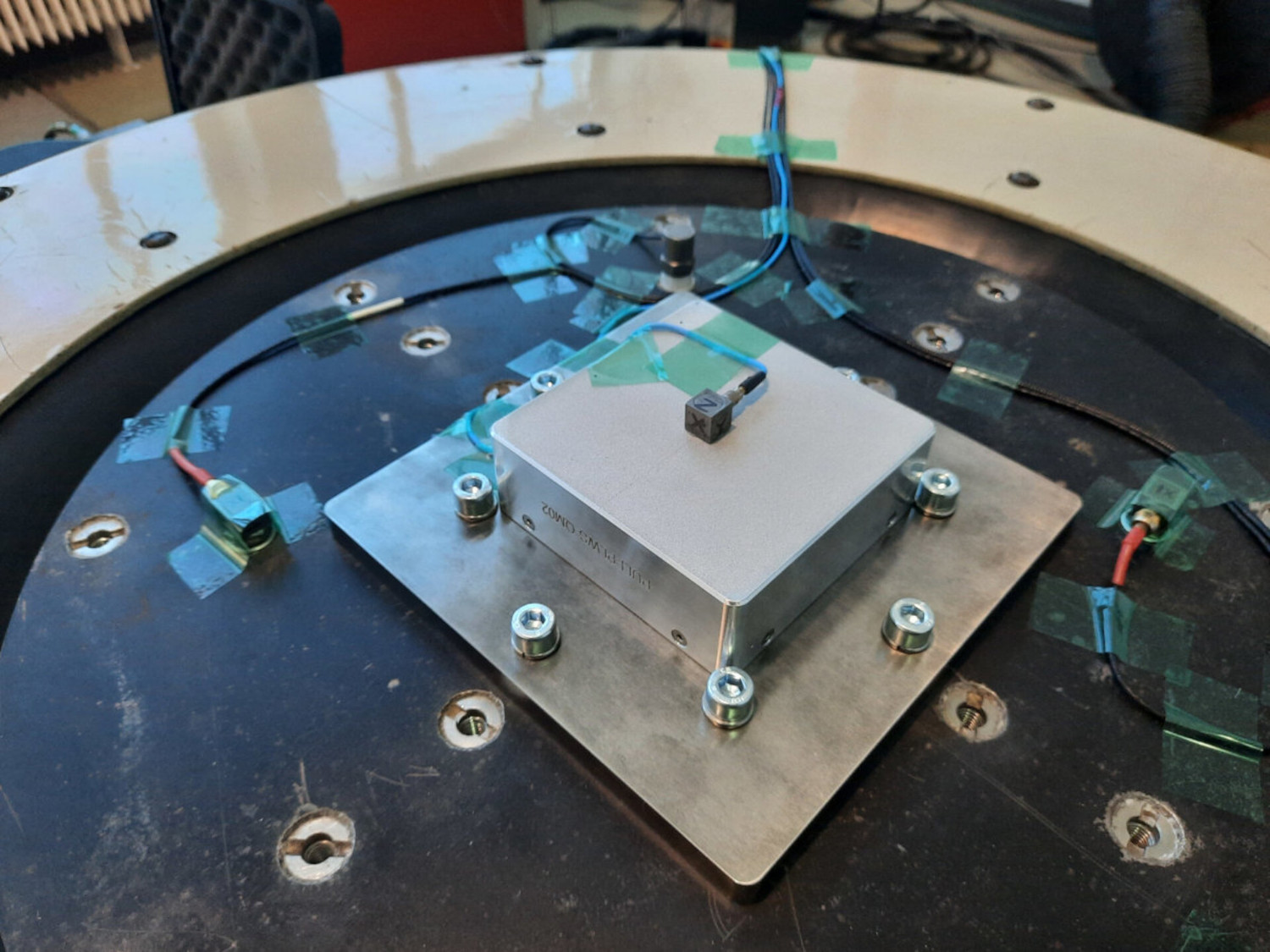ESA Signs Historical First Contract with Puli Space to Purchase Lunar Exploration Data
- Tibor Pacher
- - 15 January 2025

The Puli Lunar Water Snooper (PLWS), built by Puli Space Technologies, is integrated into Intuitive Machines’ Micro Nova Hopper (the aluminum box by the red wire in the centre of image). (Image: IM)
The Moon has obtained much attention recently. With India (Chandrayaan 3, 2023) and Japan (SLIM, 2024), there are now five countries soft-landed on the Moon, while Houston-based company Intuitive Machines made the first commercial mission landing February 2024, following the unsuccessful attempts of the Israeli Beresheet (2019) and the Japanese Hakuto-R (ispace, inc, 2023) missions. Efforts of the United States and China to return humans to the Moon, supported by substantial private investments in lunar missions, makes the Moon an interesting target for viable economic activity in space exploration.
One of the initial activities in the emerging cislunar economy is to validate possible In-Situ uses of resources. Amongst the most promising candidates is water ice, since sustainable lunar water extraction - and other resource extraction like oxygen - would catalyze the establishment of permanent outposts on the Moon and boost the creation of an affordable cislunar and deep space transportation system, making space transportation more sustainable, efficient, and ubiquitous. However, the initial work will be prospecting: we need “a good, quantitative understanding of where the resources are, how much is there, what other components are also there, how extractable the resources are, and what the commodities are worth.” (See C. Neal et al., The Moon needs an international lunar resource prospecting campaign).

A map of possible water beneath the surface of the Moon’s South Pole, based on temperature data from NASA’s Lunar Reconnaissance Orbiter. (Image: ESA)
Orbital measurements conducted earlier by various instruments provided several direct scientific evidence that hydrogen (in the form of H2O and OH molecules) can be found on the surface of the Moon, with largely varying spatial distribution. However, the spatial resolution of these data is inadequate to determine possible mining sites, so local concentration water ice mapping on the surface is necessary.
Neutron spectroscopy (used also in the aforementioned orbital measurements) is a key method to obtain information of hydrogen (and thus indirectly, of water ice) concentrations of the upper one meter layer of the lunar soil, the regolith. Hungary based Puli Space Technologies and Intuitive Machines teamed up for a first lunar surface water ice mapping attempt. Intuitive Machines’ commercial mission will use Puli Space’s NASA-awarded miniaturized neutron spectrometer, the Puli Lunar Water Snooper (PLWS), measuring only 10x10x3.4 cm and weighing barely 400 grams, mounted on Intuitive Machines’ Micro Nova Hopper. The unique autonomous rocket-fueled drone will explore the region around a permanently shadowed region (PSR) in the lunar south pole region, and intends to fly into such a shadowed crater for the first time.
The European Space Agency’s Lunar Science Office realized the importance of the expected data and ESA has made history by entering its first-ever exploration Data Buy agreement with Puli Space Technologies, marking a pivotal moment in the evolution of the private space economy. This groundbreaking collaboration not only validates the value of privately funded lunar missions but also sets a precedent for future partnerships between public agencies and private ventures in deep space exploration. ESA will work closely with Puli Space to analyze and standardize the measurement data, which will become public later.
“We are proud of the results we achieved so far,”
said Puli Space Technologies Founder Dr. Tibor Pacher.
“International recognition is important for us: it advances our ability to plan and validate our further work: we are especially excited to have ESA with us on board Intuitive Machines’ mission to reach the South Pole region of the Moon and take measurements in a so-called ‘permanently shadowed crater,’ at temperatures down to minus 200 degrees Celsius. We are also keen to work out the details of the first deep space data selling process with ESA, setting a reference for future activities.”

The Intuitive Machines' Micro Nova Hopper is integrated with their Athena lunar lander, ahead of their second commercial mission to the lunar surface. (Image: IM)
“Intuitive Machines is proud to advance commercial lunar activity by providing the critical delivery, mobility, and data transmission services needed to make bold lunar ambitions a reality,”
said Trent Martin, Senior Vice President of Space Systems at Intuitive Machines.
“Partnering with Puli Space Technologies to deliver their water snooper aboard our Micro Nova Hopper exemplifies how our infrastructure enables groundbreaking exploration in some of the Moon’s most challenging environments. By transmitting invaluable data collected from permanently shadowed regions back to Earth for the European Space Agency, we’re expanding the possibilities of lunar discovery and creating a sustainable framework for future commercial partnerships on the Moon.”
James Carpenter, Head of ESA’s Lunar Science Office noted:
“It is impressive to see how far Puli Space and Intuitive Machines have come in preparing this mission and being able to generate this first of a kind data set. We are looking forward to the mission and to the opportunity see what this data can tell us about the nature of water on the Moon.”
The Puli Space Technologies Team thanks for their PLWS technology and mission development support its volunteers, as well as its national and international partners: PCB Design Ltd., Péter Szántó (FPGArt Ltd., BME MIT lecturer), Nanosensors Lab (Energy Science Research Centre), Elektromont Ltd., Kiskutya Ltd., Concorde MB Partners, Sigma Technology Hungary Ltd., Tuxera Hungary Ltd., and the Radiation to Electronics (R2E) project of CERN.
Further information:
